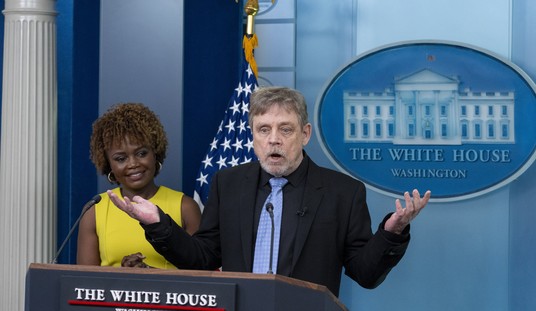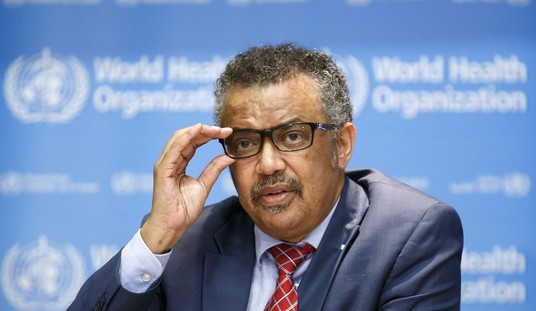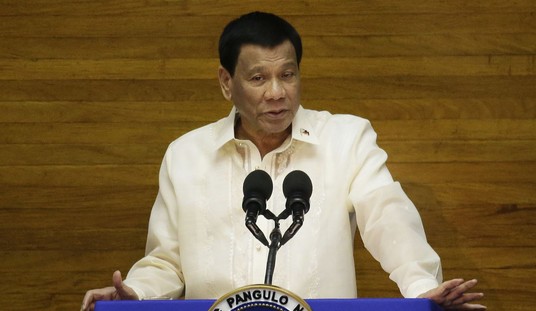What if everything we assumed about political campaigns turned out to be wrong? Well, for one thing, it might explain how Donald Trump beat a talented field of Republican primary candidates, and then won an upset against one of the least competent major-party nominees in decades last November. Hillary Clinton had all of the advantages — better fundraising, better media penetration, and the power of identity politics, and still lost anyway.
That might not have been a fluke. A new study by two California academics concludes that persuasion isn’t effective with voters, especially in the later stages of an election cycle. That has a potentially devastating implication for campaign advertising … and perhaps a sigh of relief for TV and radio audiences who dread election seasons:
The study’s authors combined a hodgepodge of 40 existing experiments on the persuasive effects of advertising and campaign contacts, and then they added nine extensive new studies of their own. The new studies were conducted during the 2016 election with the labor group Working America, an affiliate of the AFL-CIO.
Their conclusion? Advertising and campaign contacts have almost no measurable impact, at least in general elections.
“The best estimate for the persuasive effects of campaign contact and advertising — such as mail, phone calls, and canvassing — on Americans’ candidate choices in general elections is zero,” Kalla and Broockman write. “Our best guess for online and television advertising is also zero, but there is less evidence” in these cases.
If that’s true, then Hillary Clinton made a $227 million error in the 2016 cycle. Trump’s would have been almost as large, with $195 million spent on media. Since Barack Obama first abandoned spending limits in 2008, the main goal for presidential candidates has been to raise hundreds of millions of dollars in fundraisers in order to drive advertising. The more money raised, the more that advertising could get applied to targeted audiences, but the purpose remained the same — to woo and persuade voters.
This hypothesis matches up with our experience in 2016. Trump’s success didn’t come from ads — it came from his visceral connection to voters who had felt cut out of the process and of American prosperity. Hillary put a deluge of ads on television but never showed up in Wisconsin, and didn’t pay enough attention in Michigan and Pennsylvania. If this study’s correct, that was exactly the wrong strategy … but then, we already knew that, didn’t we?
If advertising and persuasion doesn’t work, what does? Showing up:
To be clear, our argument is not that campaigns, broadly speaking, do not matter. For example, candidates can determine the content of voters’ choices by changing their positions, strategically revealing certain information, and affecting media narratives — dynamics which are outside the scope of our analysis but could be affected by advertising. Campaigns can also effectively stimulate voter turnout. Our argument is not that campaigns do not influence general elections in any way, but that the direct persuasive effects of their voter contact and advertising in general elections are essentially zero.
Aaron Blake adds:
Many of us scoffed at the idea that Donald Trump could win the presidency by appealing to 35 to 40 percent of the country and shunning the more traditional methods of campaigning — including TV ads and contacts. Perhaps he was just ahead of his time.
Mayyyyybeeeee. One should take great care in reaching far-reaching conclusions from such a black-swan event. While the study itself raises some worthy hypotheses, the 2016 election was so singular — as were its candidates — that it defies application outside of those parameters. Had Trump run against Joe Biden, for instance, we might be taking a completely different inventory of what the election meant, as well as having a substantially different outcome to process.
In general, this study corroborates what happened in 2008 more than in 2016, and what I found in my book Going Red. The most effective campaign strategies focus on communities and neighborhoods, contextualize a candidate’s agenda to fit within local issues, and build effective feedback loops from these communities to continuously adjust those messages. That not only creates a superior turnout model, as Barack Obama proved in 2008, but a durable one, as he proved again in 2012. The RNC had built such a mechanism for 2016 called the Republican Leadership Initiative, which may have made a difference in places like Pennsylvania, Michigan, and Wisconsin, three battlegrounds they had already targeted (and also North Carolina). That involves persuasion to a certain degree, but more about durable connections to voters and opening of new voting markets.
In short, nothing succeeds more than showing up. Team Hillary never bothered to learn that lesson from 2008. Don’t expect that to be the case in 2020 for the next Democratic nominee.








Join the conversation as a VIP Member